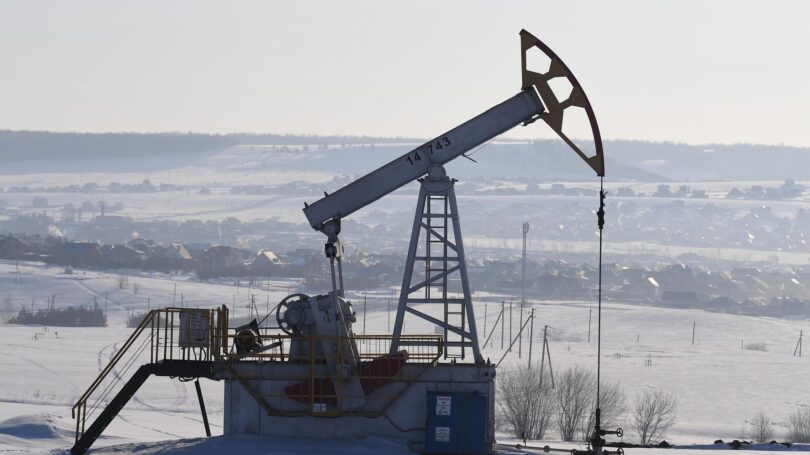Natalia Dembinskaya
After the introduction of the price ceiling in Europe and the United States are waiting for the decline in oil prices. However, analysts predict a deficit. The market already feels an imbalance: supply is shrinking, demand, primarily from China, is growing. According to the experts of the largest investment banks, raw materials will not fall in price, but will approach $110 per barrel.
Self-restraint
The ban on the transportation of Russian oil by sea came into force on 5 December. In addition, the EU, the G7 and Australia have agreed on a cap price of $60 per barrel. Moscow has shifted its focus to India, China and Turkey.
In fact, the countdown of the complete cessation of the supply of Russian energy resources to the West h-as started. OPEC+ is ex-tremely concerned about direct political interference in market mechanisms. M-oreover, analysts emphasi-ze, Moscow’s position is win-win. In particular, Rus-sia may demand an additional premium for raw ma-terials for the EU, including transit from other countries.
The Europeans are trying to fill the deficit with imports from the US, North Africa, and the Middle East. However, no supplier is able to dramatically increase production for the EU market.
Up to 110 per barrel
The initiators of the price ceiling, it seems, themselves understand that they will not succeed. This “will not affect stock prices,” admitted John Kirby, coordinator for strategic communications at the White House National Security Council.
“Such actions of the G7, despite the cunning logic, will reduce Russian revenues minimally, but they will provide shocks to wo-rld energy markets,” The N-ational Interest notes. For the West, this is fraught w-ith serious troubles. And of course, oil prices will rise.
Goldman Sachs estimates that a barrel will cost $90 in the first quarter and $95 in the second.
Bank of America predicts $110 for Brent in the second half of the year. Much depends on demand in China and India. Everything points to him growing up.
“Sanctions against Russia, low inventories, the opening up of the Chinese economy and OPEC’s readiness to cut production if demand weakens will support high energy prices,” analysts at the bank said in the report.
At a meeting on December 4, the OPEC+ countries confirmed an earlier decision to reduce production by two million barrels per day. BofA believes that in 2023 the cartel will only tighten its policy.
This fully meets the interests of Moscow and other key exporters. What can not be said about the United States, the European Union and other importers. Traders expect India and China to replace the EU as the largest consumers of hydrocarbons from Russia.
Beijing recently annou-nced sweeping changes to its “zero tolerance” policy for COVID-19, with testing requirements and travel restrictions eased. This means that China will need more fuel. The EU is constantly experiencing “energy hunger”. Competition between the Asian and European markets will intensify and clearly will not help reduce prices.
“Shadow Fleet”
In the meantime, the industry is talking about the expansion of the Russian “shadow fleet”. Companies are allegedly returning mothballed tankers to service, and EU shipowners are transferring assets to non-G7 operators.
According to the Fina-ncial Times, exports from Russia have increased in the last week, with tankers taking 3.5 million barrels a day out of ports. To Asia – 500 thousand more (16 percent). The overall figure is at a six-month high.
However, as Aleksey C-hepa, First Deputy Chair-man of the State Duma C-ommittee on International Affairs, stressed, Russia d-oes not need a “shadow fle-et.” There are enough buyers.
“Many oil-producing countries have been and have been under sanctions for a long time, today this is not a big problem,” Chepa explained.
Soften the effects
Losses, of course, can n-ot be avoided. Income from the sale of raw materials began to fall in November.
According to the International Energy Agency (IEA), Russian businesses received $15.8 billion, $700 million less than in October.
According to the Ministry of Finance, in November the country earned 90 billion rubles less from oil and gas than planned. However, as the head of the department Anton Siluanov emphasized, it is premature to assess the impact of price restrictions on the budget – after all, Moscow will take retaliatory measures.
Be that as it may, what the EU and the US were counting on will not happen. The ceiling is not low enough.
“European officials talked about how they would “starve out the Russian war machine.” In fact, would-be planners did their best to prevent the Kremlin from drastically reducing production and collapsing the market,” Bloomberg notes.
The response has not yet been announced. But it is clear that the main supplies will be redirected to China and India. And the “leftovers” from the Asian “table” may well go to the Europeans, but already at exorbitant prices.







